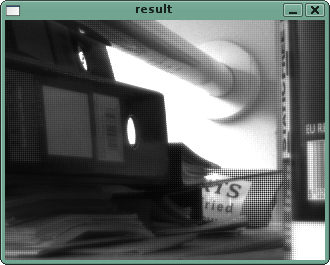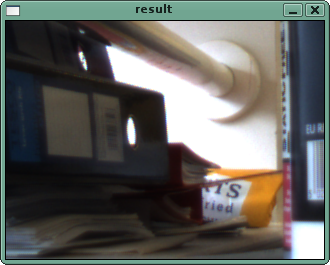Table of Contents
The Lirec camera & Linux
The official lirec camera is:
- Imaging Source DFK 31AF03-Z
Getting it working
- After plugging the camera in, you may need to do:
modprobe raw1394 modprobe video1394 chmod 777 /dev/raw1394 chmod 777 /dev/video1394
- Use Coriander to test the camera
To get an image working it's a bit picky - you have to press the buttons in the following order:
- In the services tab click 'Receive' at the top
- Then in the ISO Control box in the same tab, click 'Start'
- Click 'Display' at the top
To test OpenCV, install libunicap from http://unicap-imaging.org, then rebuild opencv by rerunning:
./configure --use-unicap=yes
The examples in libunicap are very useful for debugging, such as device_info, raw_image and sdl_display. There is also an OpenCV example here.
Getting debayering working in coriander
- In services tab again, in Format select 'Format_1, Mode_5:1024×768 Mono 8bpp'
- In options click Nearest and GBRG
- In Trigger you should be able to select 30fps
You can also get OpenCV to read from this mode, but it will get the raw image directly.
Getting the camera working with OpenCV
The caminfo for OpenCV I used for the raw image was as follows (I think Marek has a better way):
static struct caminfo cameras[] =
{
{
handle: NULL,
device_identifier: "Imaging Source DFx 31AF03-Z 1940800048",
fourcc: UCIL_FOURCC( 'Y', '8', '0', '0' ),
format_size: { 0, 0, 1024, 768 },
window: "Camera 1",
image: NULL,
properties: camera0_properties,
property_count: sizeof( camera0_properties ) / sizeof( unicap_property_t ),
cascade: NULL,
storage: NULL,
},
};
Using OpenCV for the debayering
OpenCV has a built in debayering algorithm, as part of it's colour space conversions. The one which works with the lirec camera is:
cvCvtColor(bayerimage, rgbimage, CV_BayerGB2RGB);
Where the input is a 1 channel image and the output is 3 channel RGB image.

